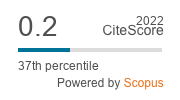L’era contemporanea, ossia il rifiuto della tradizione
Parole chiave:
Christian art,, Greco-Roman mimesis, Renaissance humanism, Medieval symbolism, Aesthetic traditionAbstract
An essay on the contemporary age must underline discontinuity or, rather, total rupture with the past. It is no exaggeration to describe the entire period from the mid-nineteenth century to the present as a pondered refusal of the artistic and aesthetic tradition which Christianity had inherited from the classic world and had transformed in accordance with its own needs. Among the rejected components of the tradition there is also the supposition that art and the sense of the beautiful have a relationship with the sacred. The essay opens with a work by the Mexican photographer Daniela Rossell, Ricas y Famosas (Last Supper), of 2002, in which, in a sumptuous but vulgar room, we see a young woman in an abbreviated evening gown sitting at a dining table beneath a large reproduction of Leonardo’s “Last Supper”. The woman’s look of sadness and her inward gaze mimic the tragic interiority of da Vinci’s Christ, just as the Hollywood-style magnificence of the room mimics the Reniassance elegance of the chamber he depicted. This work, brilliant and amusing in its mix of sex appeal, kitsch taste and conventional religiosity, sums up the “refusal” of which the essay speaks, inviting viewers to see Leonardo’s sacred masterpiece as a relic to be exploited for purposes of social advancement. Beginning with this extreme example, the essay reconstructs the mutation that took place between the end of the Baroque era and the nineteenth century in the concept of what art is and in the idea of its function.



